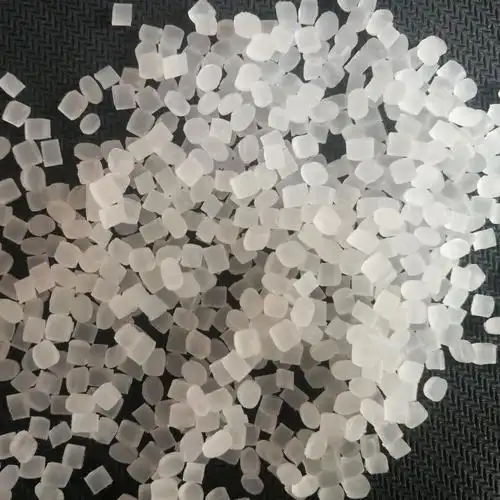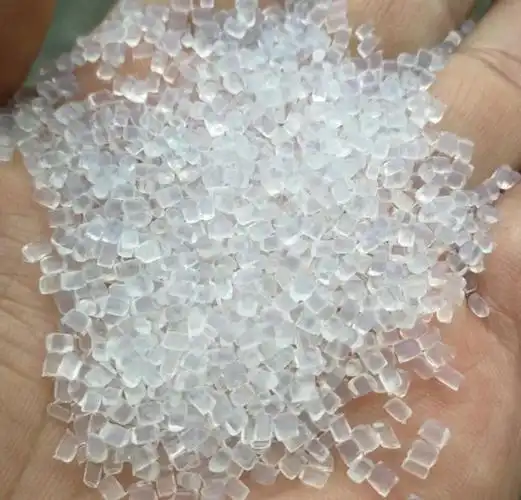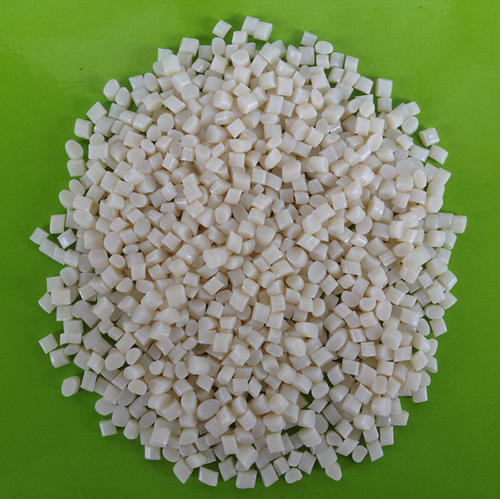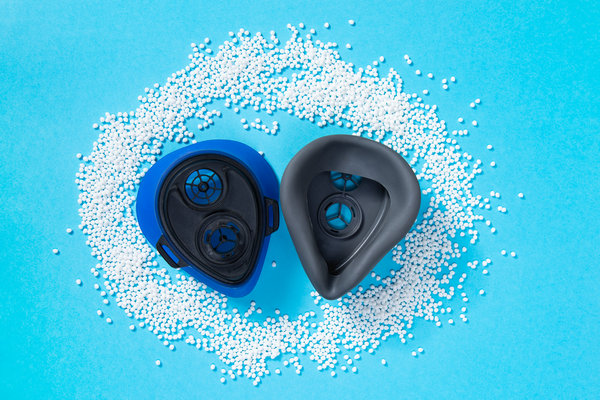Having spent over a decade in the world of thermoplastic elastomers (TPEs), I’ve had the chance to tinker with these fascinating materials in countless applications, from soft-touch grips to durable automotive seals. One question that keeps coming up, especially from product designers and engineers, is how to control the hardness of TPE materials. Hardness is a critical property—it dictates how a product feels, performs, and holds up in real-world use. Getting it just right can make or break a design. So, let’s explore the key factors that influence TPE hardness, drawing from my hands-on experience and industry insights, to help you fine-tune your material for the perfect balance of flexibility and strength.

Why TPE Hardness Matters
Before diving into the factors, let’s clarify what we mean by hardness in the context of TPEs. Hardness, typically measured on the Shore A or Shore D scale, reflects how soft or rigid a TPE feels. A low Shore A value (e.g., 20A) indicates a soft, rubbery material, while a higher value (e.g., 70A or above) feels firmer, almost plastic-like. For example, a phone case might use a 30A TPE for a cushy grip, while a car door seal might need a 60A TPE for durability.
Adjusting hardness isn’t just about aesthetics—it affects mechanical properties like tensile strength, abrasion resistance, and even processability. Over the years, I’ve seen how getting the hardness wrong can lead to issues like a grip that’s too squishy to hold or a seal that’s too stiff to flex properly. So, what exactly determines TPE hardness? Let’s break it down.
Key Factors Influencing TPE Hardness
Based on my experience working with TPEs across industries, several variables come into play when adjusting hardness. Each factor interacts with the others, so it’s a bit like tuning an instrument—you need to find the right harmony. Here are the main players:
1. Polymer Composition and Base Resin
The backbone of any TPE is its base polymer, which sets the foundation for its hardness. TPEs come in several families, such as SBS (styrene-butadiene-styrene), SEBS (styrene-ethylene-butylene-styrene), TPV (thermoplastic vulcanizate), and TPU (thermoplastic polyurethane). Each type has a different inherent hardness range due to its molecular structure.
For instance, SBS-based TPEs tend to be softer (20–50 Shore A) because of their flexible styrene and butadiene blocks. On the other hand, TPUs can range from soft (60A) to nearly rigid (50D) due to their urethane chemistry. I once worked on a project where we switched from an SBS to a TPV for a medical tubing application because we needed a slightly firmer feel (around 70A) without sacrificing elasticity. The choice of base resin made all the difference.
If you’re selecting a TPE, always check the material data sheet (MDS) for the base polymer and its typical hardness range. Your supplier can also recommend grades tailored to your target hardness.

2. Plasticizer or Oil Content
One of the biggest levers for adjusting TPE hardness is the plasticizer content, typically mineral or synthetic oils. Plasticizers are added to soften the polymer matrix, making the material more flexible. The more oil, the softer the TPE—sometimes as low as 0 Shore A for ultra-soft grades used in gels or cushions.
However, there’s a trade-off. High oil content can lead to issues like oil exudation (where the material feels greasy at elevated temperatures) or reduced durability. I learned this the hard way early in my career when a soft TPE grip (30A) started bleeding oil after being left in a hot warehouse. We reformulated it with a lower oil content and bumped the hardness to 40A, which solved the problem without sacrificing comfort.
As a rule of thumb, increasing oil content by 10–20% can drop hardness by 5–10 Shore A points, but always confirm with your supplier, as the exact impact depends on the formulation.
3. Filler Content
Fillers like calcium carbonate, talc, or glass fibers are often added to TPEs to enhance properties like strength or cost-effectiveness. These fillers can also influence hardness. Adding fillers generally increases hardness because they reduce the flexibility of the polymer matrix. For example, a 20% talc-filled SEBS might be 5–10 Shore A points harder than its unfilled counterpart.
However, fillers can also make the material feel less “rubbery” and more brittle, so it’s a balancing act. In one project, we used a calcium carbonate-filled TPV for an automotive seal to achieve a 65A hardness while keeping costs down. The filler helped us hit the target hardness, but we had to carefully control the percentage to avoid compromising elasticity.
4. Blend Ratios with Hard Polymers
TPEs are often blended with harder plastics like polypropylene (PP) or polystyrene (PS) to increase hardness. This is common in TPVs, where the elastomer is mixed with a thermoplastic phase. Increasing the proportion of the hard phase (e.g., PP) makes the TPE stiffer, pushing the hardness toward the Shore D range.
For example, in a consumer electronics project, we blended an SEBS-based TPE with PP to achieve a 75A hardness for a durable yet slightly flexible housing. The key is to work closely with your material supplier to fine-tune the blend ratio, as small changes (e.g., 5–10% more PP) can significantly impact hardness.

5. Processing Conditions
How TPE is processed—whether through injection molding, extrusion, or blow molding—can subtly affect its hardness. Factors like cooling rate, mold temperature, and shear rate influence the polymer’s microstructure. For instance, rapid cooling can “lock in” a slightly softer structure, while slower cooling might allow the material to crystallize more, increasing hardness.
I recall a case where a TPE part was coming out softer than expected (around 50A instead of 60A) due to high mold temperatures during injection molding. By lowering the mold temperature and adjusting the cooling time, we hit the target hardness consistently. If you’re seeing unexpected hardness variations, check your processing parameters with your manufacturing team.
6. Additives and Modifiers
Special additives, such as cross-linking agents or compatibilizers, can also tweak TPE hardness. For example, in TPVs, cross-linking the rubber phase increases hardness and improves thermal stability. Similarly, compatibilizers can enhance the interaction between the elastomer and hard phases in a blend, resulting in a firmer material.
In one project, we used a cross-linked TPV for a weather seal that needed a 70A hardness to withstand outdoor conditions. The cross-linking not only increased hardness but also improved the seal’s resistance to compression set.
A Snapshot of Hardness Factors
To make sense of how these factors interact, here’s a table summarizing their impact on TPE hardness:
|
Factor |
Effect on Hardness |
Typical Range of Impact |
Considerations |
|---|---|---|---|
|
Polymer Composition |
Determines base hardness range |
0–90 Shore A, up to 50D |
Choose SBS, SEBS, TPV, or TPU based on needs |
|
Plasticizer/Oil Content |
More oil = softer material |
-5 to -20 Shore A per 10% oil |
Watch for oil exudation at high levels |
|
Filler Content |
More filler = harder material |
+5 to +15 Shore A per 10% filler |
May reduce elasticity or increase brittleness |
|
Blend Ratios (Hard Phase) |
More hard polymer = harder material |
+5 to +20 Shore A per 10% PP |
Balances hardness with processability |
Note: These are approximate impacts based on standard TPE formulations. Always consult your supplier for precise data.
Practical Examples from the Field
Let me share a couple of real-world stories to illustrate how these factors play out. A few years ago, I worked on a fitness tracker band that needed a soft, skin-friendly feel (around 30 Shore A). The initial TPE was an SEBS with high oil content, which gave us the perfect softness but caused stickiness during wear tests in warm conditions. By reducing the oil content and adding a small amount of talc (about 10%), we increased the hardness to 35A, eliminated the stickiness, and kept the band comfortable.
In another case, we were developing a rigid TPE component for an automotive interior (target: 80A). The base SEBS was too soft, so we blended it with 15% polypropylene and added a cross-linking agent. This got us to the desired hardness while maintaining the part’s flexibility under impact. These experiences taught me that tweaking hardness is often about combining multiple factors—polymer choice, oil content, and additives—while keeping an eye on the end-use environment.

How to Adjust TPE Hardness for Your Project
If you’re looking to dial in the perfect TPE hardness, here’s a step-by-step approach based on what’s worked for me:
Define Your Hardness Requirements: Start with the target Shore A or D value based on your product’s needs. For example, a soft grip might need 20–40A, while a structural component might require 60–80A.
Select the Right TPE Family: Choose a base polymer (e.g., SEBS, TPV, TPU) that aligns with your hardness range and application (e.g., medical, automotive, consumer goods).
Work with Your Supplier: Share your hardness goals and environmental conditions (e.g., temperature, UV exposure) with your material supplier. Ask for sample grades to test different formulations.
Test and Prototype: Create prototypes and test them under real-world conditions. Use a durometer to measure hardness and verify consistency across batches.
Fine-Tune Processing: Collaborate with your manufacturing team to optimize molding or extrusion parameters. Small changes in cooling or shear can make a big difference.
Consider Additives and Blends: If the base TPE isn’t hitting your target, explore fillers, plasticizers, or hard polymer blends to adjust hardness without compromising other properties.
Common Pitfalls and How to Avoid Them
Over the years, I’ve seen a few mistakes that can derail TPE hardness control:
Overloading with Plasticizers: Adding too much oil to soften a TPE can lead to oil exudation or poor durability. Always balance softness with stability.
Ignoring Processing Effects: Inconsistent molding conditions can cause hardness variations. Standardize your processing parameters to ensure repeatability.
Skipping Environmental Testing: A TPE that’s perfect at room temperature might soften or harden under heat, cold, or UV exposure. Test under worst-case conditions.
Assuming All TPEs Are Equal: Different TPE families behave differently. Don’t assume an SBS will perform like a TPU—check the specs and test thoroughly.

Related Questions and Answers
To round things out, here are some common questions about TPE hardness, along with practical answers:
Q: Can I achieve a wide range of hardness with a single TPE type?
A: Yes, especially with SEBS or TPV, which can be formulated from 0 Shore A to 50 Shore D by adjusting oil, fillers, or blends. Consult your supplier for specific grades.
Q: How does hardness affect TPE’s durability?
A: Softer TPEs (low Shore A) may wear faster or tear more easily, while harder TPEs (high Shore A or D) are more durable but less flexible. Balance hardness with your application’s needs.
Q: Can I change hardness after molding a TPE part?
A: Not really—hardness is set during formulation and processing. You’d need to reformulate the material or adjust processing conditions for future batches.
Q: Are there eco-friendly TPEs with adjustable hardness?
A: Yes, bio-based TPEs (e.g., from Kraton or Arkema) offer similar hardness flexibility as traditional TPEs. Check with suppliers for sustainable options.
Q: How do I measure TPE hardness accurately?
A: Use a Shore A or D durometer, ensuring the sample is at least 6mm thick and tested at room temperature. Take multiple readings for consistency.
Wrapping Up
Tuning the hardness of TPE materials is both an art and a science. By understanding the interplay of polymer composition, plasticizer content, fillers, blends, and processing conditions, you can dial in the perfect feel and performance for your product. My years in the industry have shown me that success comes from close collaboration with suppliers, thorough testing, and a willingness to iterate. Whether you’re crafting a soft wearable or a tough industrial component, getting the hardness right can elevate your design from good to great.
If you’re working on a TPE project and need more guidance, don’t hesitate to dig into material data sheets or reach out to your supplier. The world of TPEs is full of possibilities, and with a bit of tweaking, you’ll find the sweet spot for your application.





